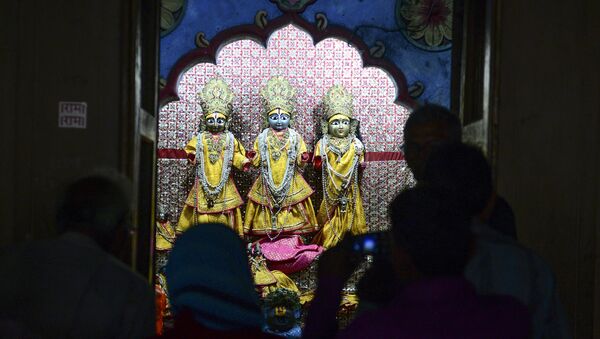In November 2019, India’s apex court settled the centuries-old communal row over a plot of land that Hindus claimed belonged to a temple dedicated to Lord Ram and Muslims claimed as part of an ancient mosque. In its ruling, the court ordered that a Ram Temple be built on the disputed land while a suitable patch of land be allotted elsewhere for the mosque. The twists and turns in this legal battle over this small patch of land in Ayodhya drastically altered the socio-religious-political fabric of modern India.
The Begining of the Hindu-Muslim Row
The Ayodhya dispute dates back to the 16th century when a mosque was built in 1528 on the site which Hindus believed to be the birthplace of Lord Rama. The mosque’s construction soon became a bone of contention between India’s Hindu and Muslim communities. The row intensified in the 1830s when a surveyor from the British colonial administration revealed that the pillars used in the construction of the mosque were taken from a pre-existing Hindu temple.
Pre to Post-Independence Cascade
In the pre-Independence era around 1859, Britishers segregated the place of worship by erecting a fence, allowing the inner court to be used by Muslims and outer by the Hindus after the first religious violence erupted. The religious tensions heightened when Hindu devotees started visiting the place of worship that is considered to be the birthplace of Lord Ram, triggering mass protests by both communities. Post-independence in 1949, the government proclaimed the premises closed and locked the gates of the place of worship for more than 30 years.
Hindu Muslims Riots, Mosque Demolition
Tensions reached a boiling point in December 1992 when Hindu activists gathered at Ayodhya and demolished the Babri Masjid Mosque. It was a buildup followed by growing calls and a campaign to construct a Hindu temple when the then-Bharatiya Janata Party President Lal Krishna Advani took out a religious procession across the country. This was the first time that the movement was led by a national political party rather than a Hindu outfit. The demolition of the mosque was followed by the worst communal riots in India post-independence, which lasted for two months. At least 2,000 people, most of them Muslim believers, were killed in the violence. This included 700 deaths in the city of Mumbai alone between December 1992 and January 1993.
Decades' Long Legal Spat & Closure
The dispute, considered to be the longest litigation in the country, lingered in various courts from 1950 until it came to the Supreme Court of India in 2011. On 9 November 2019, the Supreme Court delivered its final judgment in the case, handing the entire 2.77-acre territory to the Hindu community, while ordering a suitable 5-acre plot of land for Muslims to construct a mosque. The court cited a finding by the Archaeological Survey of India (ASI) as evidence that the remains were “not Islamic" beneath the structure of the demolished Babri mosque.
The court also directed the government to set up a trust to manage the construction of the Ram Temple in Ayodhya. The federal government, accordingly, constituted a trust in February 2020 called the Shri Ram Janmabhoomi Teerth Ksehtra Trust, which initiated the construction of the temple.
The Grand Temple
The foundation stone of the grand temple will be laid down by Prime Minister Narendra Modi in a three-day event from 3-5 August. According to the Shri Ram Janmabhoomi Teertha Kshetra Trust, the temple will be 161 feet high and have 5 domes.
The architecture of the temple will be based on the 11th-12th century Nagara style. The estimated cost of construction is INR 3 billion ($40 million) and INR 10 billion ($133.3 million) and will be used for the development of 20 acres of land around the temple premises. The grand ceremony has also evoked reactions from opposition party politicians, who are opposed to the gathering amid the pandemic.
At least 200 guests, including politicians and eminent personalities, have been invited to the event.
However, nothing has been done at the five-acre land allotted to the Sunni Central Waqf Board to construct a mosque. The Board recently announced a trust named the Indo Islamic Cultural Foundation for the construction of a mosque in Dhannipur village, around 25 km from the site where the Babri Masjid had stood.
Land Dispute Settled, Demolition Charges Continue
However, the hearing of the case on the demolition of the Babri mosque is scheduled for a hearing on 5 August, the same day as the first brick of the temple is set to be laid. The fate will be decided of key members - former deputy Prime Minister Lal Krishna Advani, Murli Manohar Joshi, Kalyan Singh - involved in the Ram temple movement by the special court in Lucknow in a case related to the 6 December 1992. The verdict is set to bring closure to the case.


